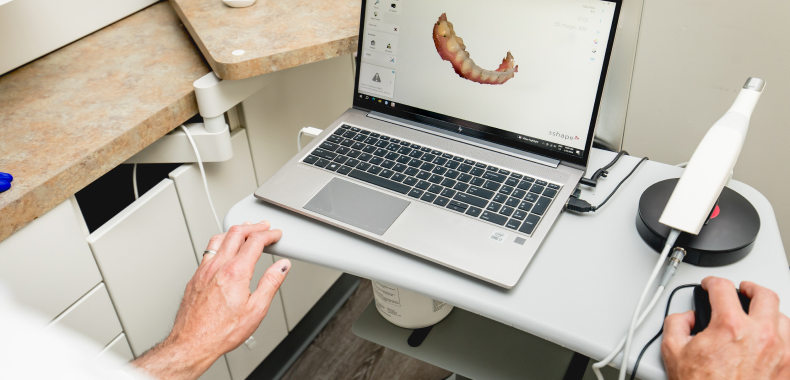What Are Dental Bridges?
Dental bridges are custom-made dental appliances that are designed to replace missing teeth. Their name is thanks to their ability to act as a tiny bridge that anchors to your healthy teeth on either side of the gap to hold a replacement tooth (or teeth) in place. Monroe Dental Group has dental bridges created from natural-looking materials to blend seamlessly with your existing smile and restore both function and aesthetics.
Explore Your Options
Missing teeth can throw out your entire smile. Thankfully, our dental bridges offer an easy solution to restore your smile's function. At Monroe Dental Group, we can help you navigate your options to find the best fit for your needs.
Traditional bridges are the most common option and use crowns that are cemented onto your abutment teeth. These bridges are a great choice for most of our patients, especially if they still have healthy teeth on either side of the gap.
Just like a traditional bridge, cantilever bridges use a crown, however, the crown is only placed on one healthy tooth next to the gap. This is convenient for situations where there's only one healthy tooth on hand, though it is not as strong due to the uneven distribution of pressure.
Instead of crowns, Maryland bridges use metal or porcelain frameworks that are bonded directly to the back of the abutment teeth, eliminating the need to reshape healthy teeth entirely. Maryland bonded bridges are a good option for replacing a single front tooth, but they are not necessarily as durable as traditional bridges for multiple teeth.
During your consultation, Dr. Klein will carefully examine your mouth and discuss your specific needs. Factors like the number and location of missing teeth, the health of your surrounding teeth, and your bite will all be taken into consideration to help select the best dental bridge.
A beautiful, functional smile is within reach!
Contact our officeThe Dental Bridge Procedure
Building the foundation
This is your chance to discuss your concerns and goals with Dr. Klein. He will examine your mouth, X-ray the area, and assess the health of your surrounding teeth. We will then discuss the best type of bridge for your situation, considering factors like the number and location of missing teeth.
Making room for your bridge
During the preparation, we will prepare the abutment teeth–the healthy teeth that will anchor the bridge. Local anesthesia can be used to ensure you are comfortable throughout the process, and a small amount of enamel will be removed from each abutment tooth to create space for the crowns that will hold the bridge in place. Once the teeth are prepared, impressions will be taken to capture the exact shape and position of your teeth, which is then used to create your custom bridge.
Your temporary bridge
While your permanent bridge is being created, a temporary bridge will be placed. This temporary bridge is made from acrylic and looks quite similar to the final bridge, albeit less durable. This ensures the protection of the prepared abutment teeth and allows you to continue eating and speaking normally during the waiting period.
Completing your smile
When your permanent bridge is ready, you will return for another appointment to have your temporary bridge removed and the fit and color of the permanent bridge checked. Once everything is perfect, we will cement the crowns onto the prepared abutment teeth and, when everything is comfortable, permanently cement it in place.
Maintaining Your New Bridge
It’s a tale as old as time, but one we will always preach: Your oral hygiene is crucial for any restoration, including the longevity of your bridge. Be sure to brush your teeth twice a day using a soft-bristled toothbrush and fluoride toothpaste and keep up with your daily flossing! We also recommend scheduling regular dental checkups for us to examine your bridge and check for any signs of wear or damage.


